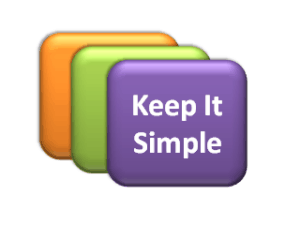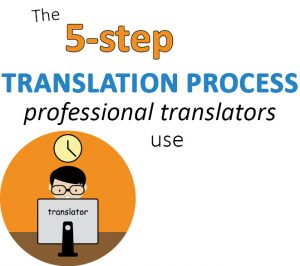
If you’re like most people you probably think getting great client testimonials is somewhat challenging, right?
That’s understandable – most suggested methods require your clients to go to quite a bit of effort, so need to be used sparingly and with due caution.
Well, we’ve got a very different way of asking for client testimonials …
… a method that is simplicity itself, isn’t an imposition for your clients, and has worked like a dream for us for years.
What’s more, it’s a method that will generate a number of other benefits for your business.
Read on for a full description of how to get customer testimonials the better way (including the exact wording we use), and how you can quickly and easily adopt it for yourself.
The type of testimonials you’ll get with this method
First off, let’s clarify what this method will, and won’t produce for you.

So it’s not suited for example to getting a thorough, multiple paragraph explanation of how you solved a specific problem for your client.

More the sort of response clients can quickly fire off without having to spend much time thinking about what they’re going to write.
Here are examples of the types of response we have had and you can expect.
1. The very brief and generic:
“Great service, thanks”
2. The gushing:
“Thanks you so much for your efficiency and wonderful customer service! We were thrilled with the quick turn around and the professionalism of the translation”.
3. Solid testimonials:
“I have utilised your translation options while working at three previous design studios and have always been very happy with all aspects of your services.”
4. Specific comments:
“This translation was complicated with the essence of the work being difficult to portray in the translation of the documents. We would do things in a different order from our end with future translations. It was a learning curve and we appreciate all the support.”
How we get our client testimonials – the method explained
The method simply involves asking clients for “feedback” by filling out a brief survey form on our website.
The form is deliberately simple, very quick and easy to complete, and has been designed with three objectives in mind:
- To get client ratings of our work and service
- To obtain useful feedback we can use
- To elicit comments we can use as testimonials.
The request is made as part of the covering e-mail we use to deliver a completed project.
Let’s flesh out these two components.
The survey form
Our feedback form comprises:
- client name and contact fields
- 2 yes/no and 3 multiple choice questions
- a field to enter any comments
- a Submit button
That’s it. I told you it was simple!
The questions
Here are the questions we ask:
- How satisfied are you with the quality of our work?
- How satisfied are you with our customer service?
- How satisfied are you with our pricing?
- Would you recommend our company to others?
- Are you happy for us to quote any comments you make in our marketing materials?
The last two are obviously Yes/No questions, and the options for the first three are:
Very satisfied Satisfied Dissatisfied No rating
These questions are designed to get the feedback/rating information we want, which we discuss in further detail below.
However what is of most interest to us here for how to get client testimonials is:
The comments box
This is a stock standard rectangular comments box, and is an optional field. It has the following wording:
“Are there areas we can improve, or any specific comments you’d like to make?”
It is the comments entered here that we use as testimonials.
The Submit button
Submitting the form takes the client to a Thank you page, and generates an e-mail to us with details of the entries made by the client on the form.
The e-mail
Here’s the wording we use in our e-mail:
Dear XX,
Please find attached the completed translations as requested.
If you have any queries about any aspect of the project, or we can be of any further assistance, please don’t hesitate to advise.
We would love to get your feedback on our work or service. We have a quick 2 minute survey here, or we’d welcome an e-mail or call at any time. Any comments you’d like to make, either good or bad, would be very much appreciated.
Many thanks and kind regards,
The impressive success rate this method generates
So, how successful is this method in getting client testimonials?
This is the response we get (we’ve averaged the results from different periods we’ve monitored):
- over 50% of new clients complete our form
- approx. 4% of existing clients also complete the form
- just under 50% of those completing the form leave a comment (48% at last count)
- around 80% of the comments left are suitable as testimonials
In practice this means we get a steady stream of usable testimonials with essentially no effort. Remember our request is part of a standardised e-mail we’re going to send to the client anyway, so it’s an automated process.
All we have to do is monitor the responses, and use the ones we want.
Note our low response rate from existing clients of around 4%.
This isn’t surprising as from our experience after a client has completed the form once, they are unlikely to do so again. And remember they receive the request for every job or project we deliver them – potentially several times a week or month.
That 4% figure for existing clients thus generally involves a new contact person within the client organisation completing the feedback form for the first time.
In that sense a more useful success measure might be the response rate from all contacts receiving the request for the first time. Whilst we haven’t collated this, we’d assume it would be similar to the “new client” figures.
The 3 reasons why this is such an effective way to get client testimonials
1. It’s dead simple for the client to do
The form is deliberately designed to be very quick and easy to complete. We call it a “2 minute” survey, but in fact it will often take little more than 30 seconds.
Clients don’t have to rack their brains to come up with some wording, just click a few options and add a quick comment if they feel so inclined.
We also make a point of asking for “feedback” and stay away from the word “testimonial”. That’s because giving feedback, and especially in a quick 2-minute form, is perceived as something that’s straightforward and easy to do.
Conversely, a testimonial can be perceived as something more formal, complex and structured, so requiring more effort and time set aside to do it. Writing a testimonial will likely be seen by your client as at least an inconvenience, and possibly a hassle – they’re busy after all.
So the method reduces to a minimum both the actual inconvenience and the perceived inconvenience for clients to respond to the request. We’re sure this is instrumental in getting a good response rate.
2. There’s no pressure on the client
Clients can feel somewhat pressured when directly asked to provide a testimonial. You’re asking them to go out of their way and take time out from their busy schedule to do you a favour.
They’ll also feel they more or less have to sing your praises, when they may not actually want to. If that’s the case, what are their options? Ignore your request, say no, or reluctantly do it.
None of these options may appeal, so you’d better be sure you have plenty of goodwill built up with your client. Get it wrong, and they not only may not give you the testimonial you asked for, but could go elsewhere for their next project!
Conversely there’s no pressure with our method. The feedback request is just an add-on to an e-mail with a different purpose (delivering the project), so can be safely ignored if they like. And the comment field on the survey form is optional, so they don’t even have to provide a comment if they don’t want to.
3. The timing of the request is ideal
The request arrives right when your clients are most receptive to providing a testimonial. The work is being delivering on time (or early) and the project has gone smoothly, so they’ll think you’re great.
They’ll never be more likely to provide positive feedback and favourable comments.
Also important is that your client will still feel mentally engaged with the project – for him it’s still in progress. As such he’ll likely view your request as just another component of the project, and as it’ll only take two minutes, no big deal.
Compare this to a request after a project is completed. Your client will have psychologically moved on to other things, so he’ll likely see it as an additional, unexpected and possibly unwanted task. There can be an element of frustration at being asked to resurrect something already compartmentalised as done and dusted.
The huge additional benefit this method gives you
The great thing about this method is that in addition to getting you client testimonials, it’s also an excellent tool for monitoring how key aspects of your business are tracking and gleaning information on how your clients perceive your business.
In our case we’ve structured the feedback questions to gauge satisfaction levels on our pricing, service and work quality. Those happen to be the areas we want to know about, but your questions can be directed to whatever parameters you would like to monitor for your business.
We’ve also deliberately kept the form very simple with just 5 quick to answer yes/no or multiple choice questions, and just one open-ended question. And even that is optional. Our reasoning here is we would prefer a larger number of simpler responses over a smaller volume of more in-depth feedback.
You will no doubt have different priorities and preferences, so will decide on a different mix and number of questions. In structuring the questions, the thing to remember is the more open-ended questions you use, the more time consuming it will be for your client. There will be exceptions, but generally the longer the questionnaire will take to complete, the greater resistance clients will have to completing it.
Another unexpected (hidden) benefit
It is also worth mentioning that our Comment field, our one and only open-ended question, has proven particularly valuable for us. It’s a great source of testimonial gems of course, but can also provide all sorts of other valuable information.
In particular,
- We can learn about upcoming projects and other business opportunities
- We latch onto any negative comments, as they often flag easily rectified issues we otherwise wouldn’t have known about, or stem from a misunderstanding or incorrect assumption. A quick and helpful response can impress the client, sort things out and cement their future business.
This is a secondary potential benefit that may not be evident when you first decide on your questions and set up your form.
The pros and cons of gathering client testimonials this way
We see this method as having a number of advantages:
1. You’re contacting a large number of clients, not just a select few.
Although we send the request out with every job we complete, you might choose to send it only once to any contact. Ie, just to new or first time clients/contacts. That will still be a much bigger number than hand picking those clients you think would be happy to provide a traditional, more detailed testimonial.
2. It’s not a burden or irritation for your clients.
They can safely ignore your request if they like, or respond very quickly and easily, with or without a personalised comment. You won’t alienate them!
3. It has a proven good success rate.
See above – we get a 50% general response and 20% rate of usable comments from first-time clients/contacts.
4. It produces a large volume of testimonial comments to work with.
So, plenty of choice as to which comments you use.
5. The testimonial comments received are overwhelmingly positive.
I’m sure this is because of the timing – catching clients right when they’re most predisposed to singing your praises. It will give you great % satisfaction figures if you want to use them.
6. Once set up, it’s an automated system.
That means there is no time involved in selecting the clients to contact, and then manually sending them your testimonial request.
7. You can tailor the questions to what you want.
So you can target and get comments on the specific areas of your business or service you want.
8. It’s also a great way to garner feedback and monitor KPIs.
See the preceding section
On the negative side:
– this process won’t produce in-depth testimonials.
4 or 5 lines is about the maximum you’re likely to get, so if you need something more substantial, this probably won’t suit.
– you may not quite get what you’d ideally like!
Because you’re not directly leading your client in what to say, that perfect testimonial may remain frustratingly elusive …
– it requires programming.
Yes, there is some time and/or cost involved in setting it up, but not much – see next section
About the programming of the webform
This process involves gathering testimonials through a form on your website, so that webform needs to be created.
But that isn’t difficult and the programming involved is minimal, so shouldn’t be expensive.
In fact, forms are a doddle to create in most website hosting platforms, so talk to your webmaster or designer.
You’ll probably be surprised how easy it is.
To finish, here is some general information on the value of customer testimonials and how to use them.
A reminder of why client testimonials are Gold
Testimonials are hugely valuable as they provide “social proof”. That’s the credence we place on other people’s opinions of you and experiences of dealing with you.
You can’t expect a client to believe you when you say you’re brilliant and provide great service. That’s what everyone says, and we’ve all learnt to be wary of anyone singing their own praises.
But when a bunch of other people say that, we think it must be right. That’s social proof, the perceived wisdom of the crowd. It carries huge weight.
Client testimonials really are the best marketing – and they’re free!
5 possible ways to use your client testimonials: our suggestions
1. On your website
A separate Testimonials page is a good idea, but also consider adding quotes to your home page and any other significant pages visitors land on.
2. In your marketing materials
They’ll make your message more credible and help your potential clients trust you.
3. In your CV if you’re a freelancer
As proof of your expertise – see No. 5 in our article on crafting an ideal freelance translator CV.
4. As part of your e-mail footer
Not many people do this, but why not!
5. In your quotes
To help convince your client you’ll do a professional job and be great to deal with – see No. 13 in our checklist for writing successful translation quotes.
All our articles, guides, checklists and templates are designed to help freelance translators be more successful in business.
They’ll help you with your website, cv, getting work, setting your rates, quoting and a whole lot more.
Check out the full list on our translator tips and resources page.
Or maybe these ever-popular, more general articles would be of interest:
The specialised skills needed to be a professional translator, and why so few people have them
The translation process the professionals use, and what happens when you miss a step out
The smarter, more effective approach to quote follow up









